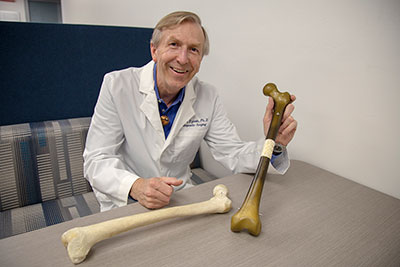



Get new exclusive access to healthcare business reports & breaking news




University of Arizona has received a $2 million grant to heal bone fractures using a combination of 3D printing and adult stem cells. John A. Szivek, a renowned biomedical engineer, is working on helping US veterans who are injured in battle by creating 3D print scaffolds – plastic bone-shaped frames – to replace large, missing or broken bone segments.
Although this particular project is dedicated to war veterans, 3D printed bones are one of the most exciting trends in modern medicine with multiple device manufacturers throwing hats into the ring.
3D printing has been around for over a decade. This technology is usually employed by companies and entrepreneurs who wish to create visual prototypes for their specific ideas in order to get institutional alignment and gain investors at the early stage of product development. 3D printing has also been commercialized on popular websites such as Etsy or Ebay, where creative designers have brought various gadgets and accessories to life with their personal 3D printers. 3D printing is now its own ecommerce industry and numerous retail websites compete for the most unusual 3D printing ideas for holidays.
That said, in 2018, 3D bioprinting has become one of the most exciting new trends emerging in the healthcare manufacturing space. For example, earlier this year, Xilloc, a Netherlands-based company brokered a deal with Next21, a Japanese enterprise, to bring 3D printed bones to hospitals all over Europe.
3D bone printing is big news for both hospitals and patients all over the US. With over 6.8 million broken bone cases per year in the US, the applications of 3D bioprinting in the US are endless.
To be clear, it is not appropriate to use this technology every single time a person breaks their leg. However, the technology is perfectly suited to assist in complex cases that traditionally would result in a limb amputation. In the US, 185,000 people have an amputation each year. That’s 300 to 500 people each day.
When a patient suffers a traumatic event, for example when involved in a violent car crash, he or she may have one of their legs shattered beyond repair. As a result of the accident, the patient’s bone could be fractured to such an extent that it can no longer be replaced via traditional bone grafting methods (i.e., replacing the bone with a normal implant) and needs to be amputated.
The reason 3D printing is huge news is because, in theory, 3D printed bones can be made on the spot, at the hospital, to the exact specifications of a given patient’s actual bone structure. In today’s medical practice, bone grafting is harvested from a patient’s body, a bone bank, or by using “off the shelf” synthetic bone models.
With 3D printing, all these methods can be replaced with a custom bone. In addition to using a different technology, suffering patients could catch a huge break. Today’s method of using medical devices, pins, to hold pieces together while the bone heals, is incredibly painful for the patient and the road to recovery is long and tedious. In early animal testing, ceramic 3D bone implants led to a significantly faster recovery timeframe.
Last year, a 27-year-old Australian man became the first person in the world to receive a new 3D printed shin bone after an infection rotted the majority of the bone in his leg.
The 3D printed bones and scaffolds Doctor Szivek plans to create will have life a changing impact for our veterans. With current procedures, bone reconstructive surgeries have a high failure rate due to the severe nature of some bone fractures. In addition, patients end up having to undergo multiple procedures and an even longer recovery period.
As Doctor Szivek explains: “Patients often re-break the damaged bone area after surgeons try to repair it and the limb will eventually be amputated. There’s just no good way of regenerating or re-growing long bone segments right now.”
But there is one thing that makes the recent announcement even more exciting in the long term.
In addition to helping patients with traumatic experiences save their legs (e.g., veterans), 3D printed bones have the potential to save the lives of the approximately 3,500 Americans who are diagnosed with bone cancer. The 3D printed bones will eventually be able to replace cancerous bones and increase the life expectancy of those Americans living with bone cancer.